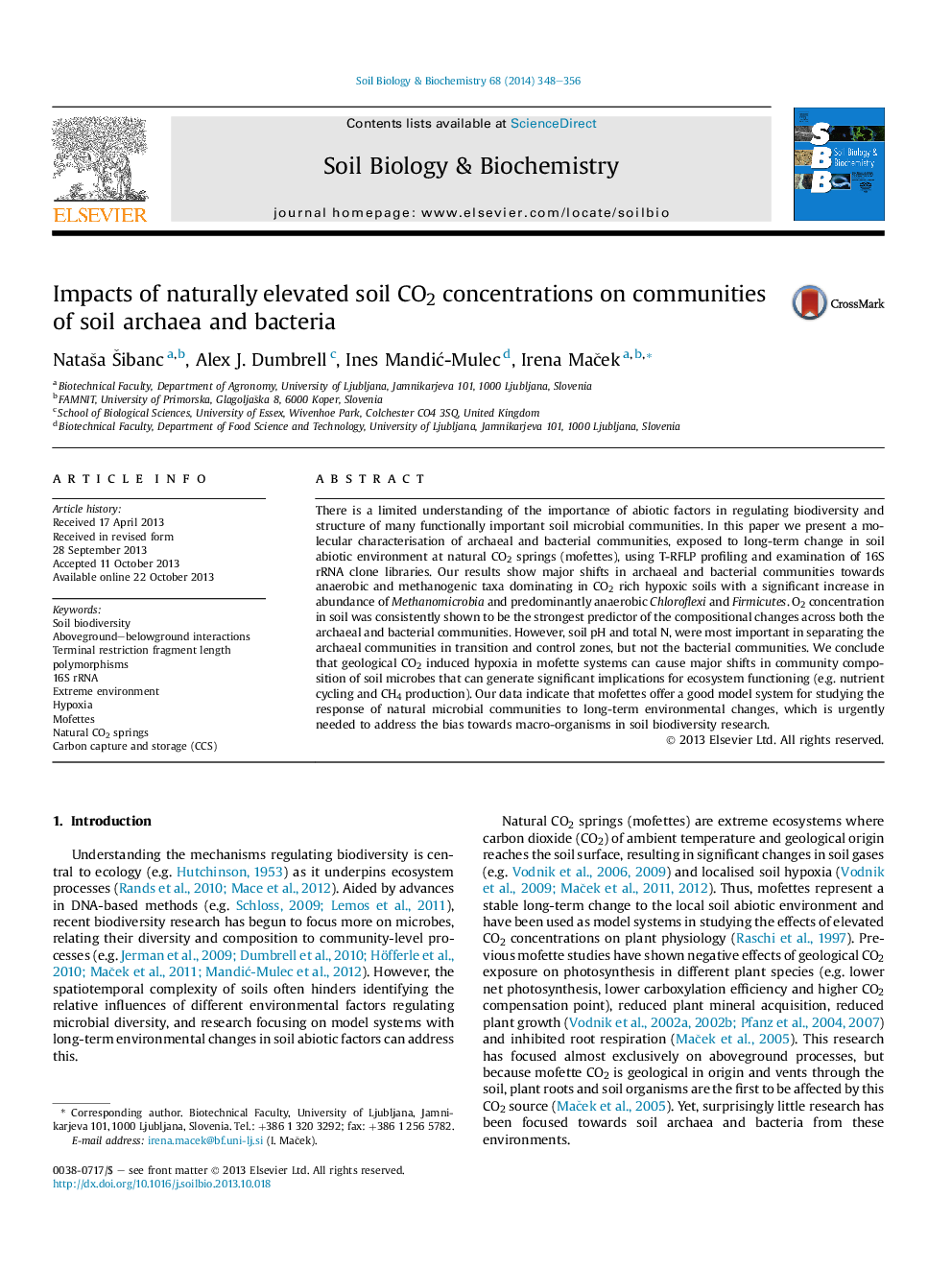| Article ID | Journal | Published Year | Pages | File Type |
|---|---|---|---|---|
| 8365149 | Soil Biology and Biochemistry | 2014 | 9 Pages |
Abstract
There is a limited understanding of the importance of abiotic factors in regulating biodiversity and structure of many functionally important soil microbial communities. In this paper we present a molecular characterisation of archaeal and bacterial communities, exposed to long-term change in soil abiotic environment at natural CO2 springs (mofettes), using T-RFLP profiling and examination of 16S rRNA clone libraries. Our results show major shifts in archaeal and bacterial communities towards anaerobic and methanogenic taxa dominating in CO2 rich hypoxic soils with a significant increase in abundance of Methanomicrobia and predominantly anaerobic Chloroflexi and Firmicutes. O2 concentration in soil was consistently shown to be the strongest predictor of the compositional changes across both the archaeal and bacterial communities. However, soil pH and total N, were most important in separating the archaeal communities in transition and control zones, but not the bacterial communities. We conclude that geological CO2 induced hypoxia in mofette systems can cause major shifts in community composition of soil microbes that can generate significant implications for ecosystem functioning (e.g. nutrient cycling and CH4 production). Our data indicate that mofettes offer a good model system for studying the response of natural microbial communities to long-term environmental changes, which is urgently needed to address the bias towards macro-organisms in soil biodiversity research.
Keywords
Related Topics
Life Sciences
Agricultural and Biological Sciences
Soil Science
Authors
NataÅ¡a Å ibanc, Alex J. Dumbrell, Ines MandiÄ-Mulec, Irena MaÄek,
